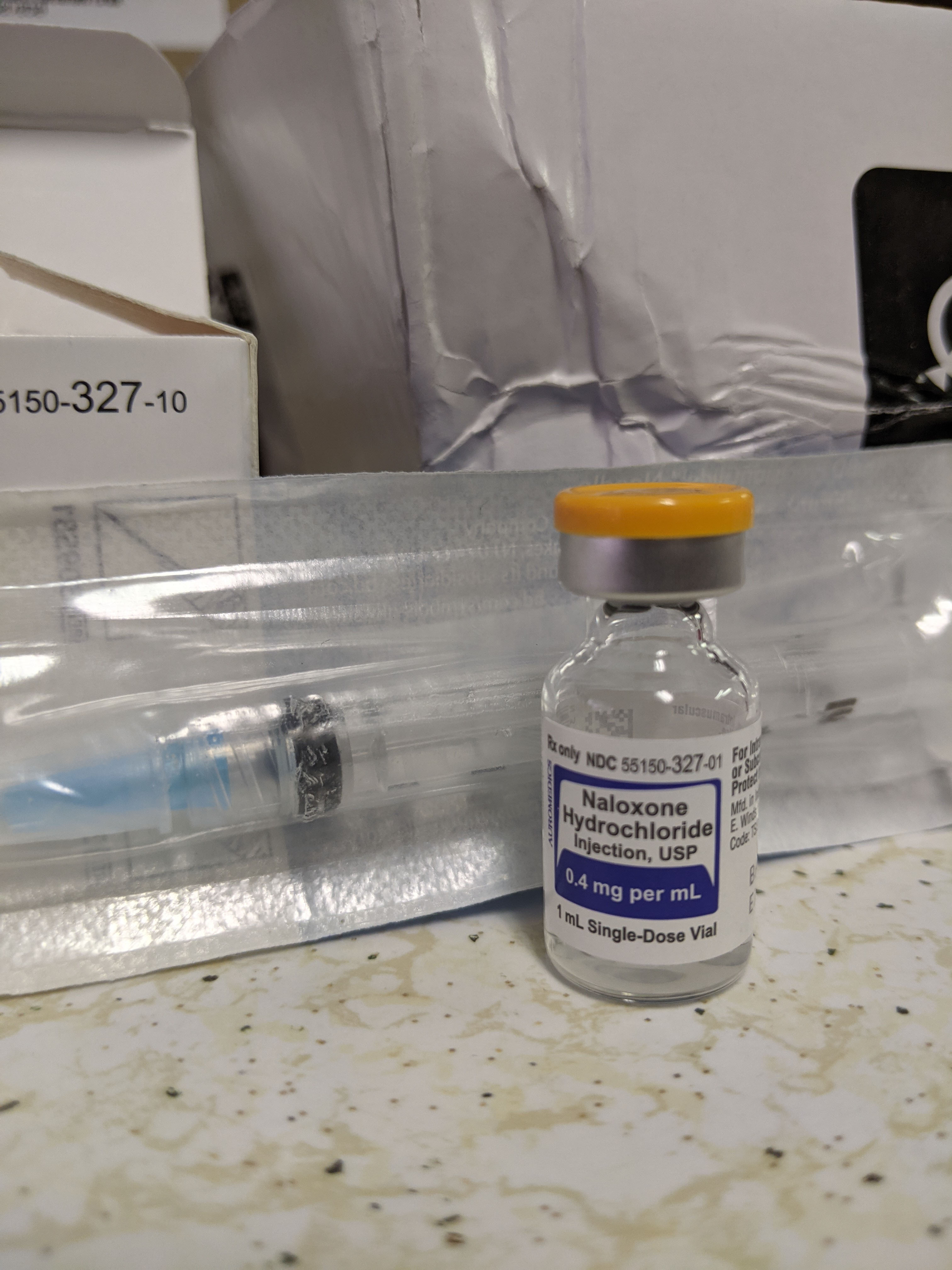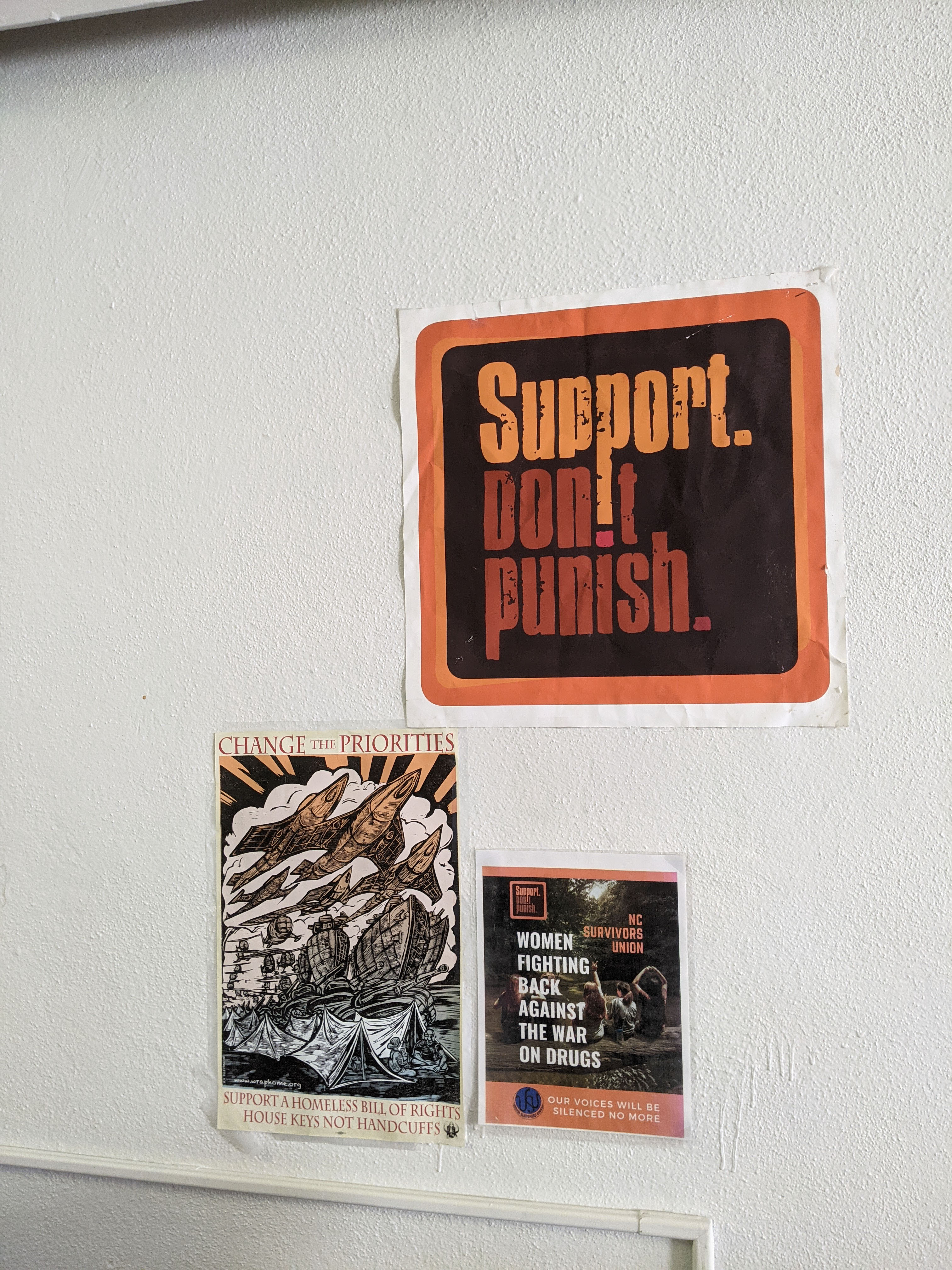Home » Medications »
With Overdose Deaths Surging, Advocates on the Ground Push for Over-the-Counter Naloxone
Treatment for addiction is available. For help, call the free and confidential treatment referral hotline (1-800-662-HELP), or visit findtreatment.gov.
GREENSBORO, N.C. — Louise Vincent figures her group, the North Carolina Survivors Union, saves at least 1,690 lives a year.
The harm-reduction and syringe service program distributes the opioid overdose reversal medication naloxone to people who use drugs. Research suggests this approach is effective, since people who use drugs are most likely to witness an overdose and administer naloxone.
The 1,690 number refers to how many times participants in the Survivors Union reported using the medication between July 2020 and June 2021. But the true number of lives saved could be higher: The program distributed nearly 9,400 doses of naloxone during that time.
Now, as overdose deaths nationwide reach all-time highs, the Biden administration has made increasing access to naloxone a key part of its overdose prevention strategy. It has allotted an unprecedented $30 million in federal funds for harm-reduction groups and announced the creation of a model law that state legislatures can pass to improve access.
But Vincent and her peers say the administration has not addressed their greatest barrier to obtaining the lifesaving medication: naloxone’s prescription-only status.
“This designation is the root of all evil,” said Nabarun Dasgupta, a scientist at the University of North Carolina’s school of public health and co-founder of the Buyers Club, a collective of more than 100 harm-reduction programs in the U.S.
Email Sign-Up
Subscribe to KHN's free Morning Briefing.
The Food and Drug Administration approved naloxone as a prescription drug to treat opioid overdose in 1971, when it was only an injectable drug. That remains the cheapest form and the one used most by harm-reduction groups, which have long relied on a deal with Pfizer to buy the medication for less than $5 a dose. However, newer, nasal spray versions of naloxone — including the brand-name drug Narcan, which has a discounted price of about $38 a dose — are available in many police stations, libraries and schools.
All 50 states allow individuals to buy naloxone at the pharmacy without a prescription. States don’t have the authority to designate it as an over-the-counter medication, but they’ve created workarounds — such as a state health official writing one prescription that can be used for every resident. But these workarounds don’t apply to organizations that purchase naloxone in bulk from drugmakers. When a hospital, harm-reduction group or any other organization orders naloxone from pharmaceutical companies, the companies are required to treat naloxone the way the federal government sees it: as a prescription medication, Dasgupta said. As a result, the companies impose a series of requirements on buyers.
For example, an organization that orders naloxone must have a doctor sign for the order, and that doctor must be someone who has not signed for another group. The organization must also have an address that is not a private home to receive shipments, a medical or pharmacy license and the ability to comply with regulations for storing and dispensing the drugs.
Hospitals and health departments can easily fulfill these requirements. But they can be onerous for smaller, grassroots groups, many of which are led by volunteers and operate out of makeshift home or car offices, said Eliza Wheeler and Maya Doe-Simkins, co-founders of the Buyers Club and co-authors of a paper with Dasgupta on this subject.
When these groups can’t order naloxone, the people they serve can die, Wheeler and Doe-Simkins said.
Those clients won’t necessarily turn to pharmacies. Indeed, as overdose deaths surged in 2020, pharmacy sales of naloxone decreased. The cost of the medication, requirements to show ID, a fear of discrimination from pharmacists and an inability to find a pharmacy that stocks naloxone are all barriers, said West Virginia University researcher Robin Pollini, who studies naloxone distribution.
So harm-reduction groups are calling on the FDA to allow naloxone to be sold over-the-counter so they can order it more easily and distribute it to the people at the greatest risk of overdosing.


The product has long been deemed safe and effective for community use, harm-reduction groups say, even by the FDA. Other advocates have suggested that the Department of Health and Human Services issue an order allowing manufacturers to sell naloxone to organizations buying in bulk without a prescriber’s signoff.
“Having more naloxone on the street can only do good. It can’t do harm,” said Thomas Stopka, an epidemiologist and substance use researcher at Tufts University School of Medicine. “We need to pull out all the stops and consider a bunch of different avenues to address this issue of supply.”
The concern was highlighted this year when a manufacturing problem depleted Pfizer’s stock of naloxone and the company couldn’t fill orders for harm-reduction groups. Hikma, another company that makes naloxone, offered to donate 50,000 injectable doses to the affected groups. But because of naloxone’s prescription status and Hikma’s associated paperwork requirements, only three harm-reduction programs qualified, Dasgupta said. (Pfizer said that the manufacturing issue has been resolved and that shipments resumed this fall.)
In Oklahoma, Stop Harm on Tulsa Streets (SHOTS) didn’t qualify for Hikma’s donation because the group didn’t have a doctor who could sign for its order, co-founder Hana Fields said. The doctor the group had previously worked with retired in January, and SHOTS had yet to find a replacement. Many doctors are worried about liability or simply don’t return her calls, she said. In the meantime, SHOTS relies on naloxone donations from other programs.
“The stakes are so high. My friends are dying,” said Fields, whose life has been saved by naloxone and who has been in recovery for seven years.
In a statement to KHN, the FDA laid responsibility on the companies making naloxone, saying it has encouraged pharmaceutical manufacturers to apply for over-the-counter designation for years, even doing the legwork to develop consumer-friendly labels that are typically the purview of companies.
“We continue to hope that one or more sponsors will submit an application, as this would be the most direct regulatory path for the FDA to be able to approve a non-prescription naloxone,” the agency said.
But when, or if, that’ll happen is unclear.

Pfizer and Hikma told KHN that they do not have current plans to pursue an over-the-counter designation. Emergent BioSolutions, which makes Narcan, said it is “evaluating the potential for OTC naloxone” but warned of “unintended consequences” from the switch, such as insurers no longer covering the cost and consumers having to pay out-of-pocket. (Experts say products typically are cheaper when sold over the counter.)
Harm Reduction Therapeutics, a nonprofit pharmaceutical company, said it plans to apply for an over-the-counter naloxone nasal spray next year, with the goal that it be on shelves in 2023. CEO Michael Hufford said the company will donate most of its product to harm-reduction groups and raise funds to offset the cost to consumers at retail pharmacies. Currently, the bulk of the company’s funding comes from Purdue Pharma, the maker of OxyContin.
But advocates say the FDA should make the switch itself.
“We have this lifesaving tool available throughout the whole time of this crisis, and the federal government has just been sitting on its hands,” said Leo Beletsky, a professor of law and health sciences at Northeastern University in Boston.
Some pharmaceutical companies in the past have argued that the government doesn’t have the authority to designate a prescription drug as over-the-counter, but others point to a statute that allows a drug’s prescription status to be removed “when such requirements are not necessary for the protection of the public health.” In 1982, the FDA designated an asthma inhaler as an over-the-counter drug without the company’s request, though it later rescinded that status because of widespread criticism that the inhalers would be overused.
Meanwhile, harm-reduction organizations, like the North Carolina Survivors Union in Greensboro, see the demand for naloxone daily. Vincent, who runs the program, said cost and regulatory burdens prevent her from ordering naloxone directly. Instead, she relies on donations from other groups. But she fears the day her group doesn’t have enough.
“I can’t look someone in the eye and tell them I can’t give them medicine that’s going to save their lives,” Vincent said.
Source: Read Full Article


